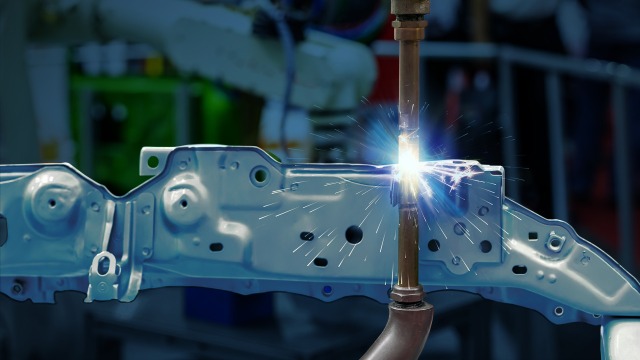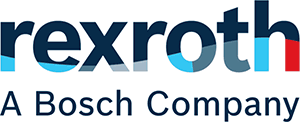

Industries
OverviewService
OverviewCompany
OverviewProduct groups
OvervieweConfigurators and Tools
Overview

In the automotive industry, the bar is constantly being raised in terms of design, crash performance and lightweight construction. As a result, resistance spot welding technology is also changing. A wide variety of materials as well as different surfaces, shapes and thicknesses have to be joined quickly and precisely. The increasingly complex welding tasks and hard-to-reach welding areas lead to higher spatter rates. Bosch Rexroth is the only supplier on the market with a solution to this problem: "Adaptive Spatter Reduction". With this new function, weld spatter can be reduced automatically, and high manual rework costs are a thing of the past.
Electromobility promotes development: New and more complex sheet thickness combinations have to be joined with the best quality at maximum speed. However, specialists for such welding tasks are rare, as the shortage of skilled workers is also significant in this segment. The increasingly difficult welding tasks and rising cost pressure necessitate constant optimization of welding parameters to ensure that weld spots can be made reliably and efficiently.
Particularly complex weld spots, such as hot-formed steels, result in an increased spatter tendency in resistance spot welding. The increasing spatter rate is only exacerbated by shorter cycle times, which are intended to increase productivity, as well as new approaches such as short-pulse welding. Spatter during production not only causes contamination and deposits, it also means more costly post-processing. This is particularly detrimental in the series production of vehicle chassis, for example.
With the new "Adaptive Spatter Reduction" function from Bosch Rexroth, weld spatter occurring in the welding process can be automatically detected and minimized within a predefined tolerance range. The application can significantly reduce post-processing and cleaning cycles in welding systems. The function is integrated as standard in the PRC7000 welding control system from Bosch Rexroth. It runs completely independently on the welding control system. It can be purchased as a software license or ordered as a service.
"Adaptive Spatter Reduction" is used, among other things, for resistance spot welding in chassis construction. Here, it helps to automatically optimize welding parameters in terms of quality, spatter-free welding, energy efficiency and threshold values. In this way, it solves an ever-growing problem: The application replaces the need for welding specialists, who many manufacturing companies do not have in their ranks or cannot find on the labor market. In the past, these specialists performed work that can now be automated: they reprogrammed the welding programs such that the amount of rework required was reduced. However, since weld spatter is repeatedly generated in the course of a product's life due to process fluctuations, this increased optimization work is not a one-off occurrence. The Bosch Rexroth solution eliminates the need for this manual welding parameter optimization – both during the commissioning phase and during series production.
Automotive manufacturers can now achieve their quality metrics during commissioning in significantly less time – up to 50 percent faster. Reducing the commissioning time also shortens the time-to-market. In addition, the spatter rate during production can be minimized by up to 90 percent. This has a noticeable impact on costs. This is because less rework is required to remove spatter residue from the chassis, and significantly less time is needed for quality assurance or to eliminate quality defects.
“Adaptive Spatter Reduction" also pays dividends in terms of sustainability: only as much energy as is needed to achieve the required quality level is used. In this way, Bosch Rexroth ensures welding is spot-on.
The application is already being used successfully by a leading German car manufacturer. Demand is expected to rise significantly, as the increasingly demanding welding tasks require a level of expertise that is not widely available, and also necessitate ever greater process optimization, which only software can realize. "Adaptive Spatter Reduction" enables automotive manufacturers to pick up the pace in the race for the best position in the market.
Author: Sebastian Zeller
Position: Product Owner Resistance Welding Controls, Bosch Rexroth AG
